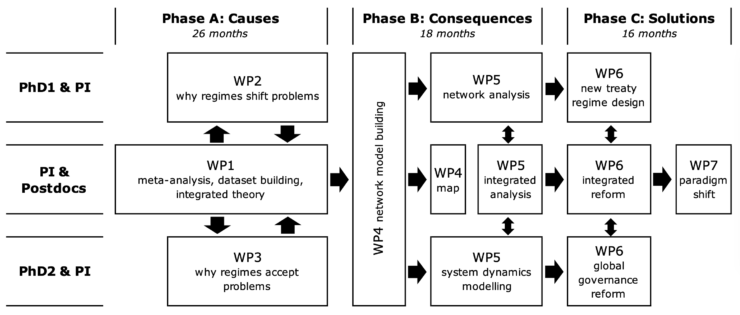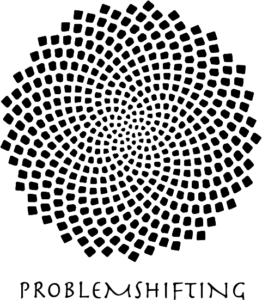Research Design
Problem-Shifting between International Environmental Treaty Regimes: Causes, Consequences, and Solutions
International environmental treaties are designed to solve specific environmental problems. Yet their potentially negative impact on environmental issues other than their own is rarely studied. Until now global governance theories have assumed that environmental treaties are inherently ‘green’, and hence, any adverse consequences are conveniently set aside as unintended or inevitable. But is that true?
Questions: Here we question, do environmental treaties ever pursue their objectives by merely shifting problems to others? If so, when and why? Does such buck-passing create any systemic risk beyond those directly affected? And what might be appropriate responses to ensure our efforts add up to a net positive impact? Environmental problem-shifting, or protecting one part of the environment by damaging another, is a major dilemma arising in global governance. Yet the issue remains under-investigated, requiring an urgent scientific inquiry.
Objectives: PROBLEMSHIFTING examines the causes and consequences of, and provide solutions to, environmental problem-shifting between international environmental treaty regimes. By drawing on our interdisciplinary and multi-method expertise in ‘earth system’ law and governance, we (1) identify and explain the conditions under which problem-shifting occurs; (2) assess and predict the systemic effects of problem-shifting; and (3) offer solutions for optimizing the currently fragmented governance system. We aim to advance the theoretical debate on the architecture of global governance and its overall effectiveness. Building on the theoretical and empirical foundations, we will offer unique insights and valuable advice to markedly improve global governance decisions.
Methods: We employ both small-n qualitative ‘within-case’ and ‘cross-case’ analyses (process tracing and Qualitative Comparative Analysis) and large-n quantitative analyses (network analysis and system dynamics modelling) to understand the causes and consequences of problem-shifting, respectively. In addition, participatory workshops will be organized to co-explore possible governance solutions with stakeholders.

Figure 1. PROBLEMSHIFTING is organized in three Phases and seven Work Packages.
The three research objectives correspond to the three Phases in the project – causes, consequences, and solutions – which are in turn organized in seven Work Packages (WPs) (Figure 1). Phase A (WPs 1, 2, and 3) examines the causes of problem-shifting (qualitative analysis); Phase B (WPs 4 and 5) analyses the systemic effects of problem-shifting (quantitative analysis); and Phase C (WPs 6 and 7) synthesizes key findings and offers governance solutions.


